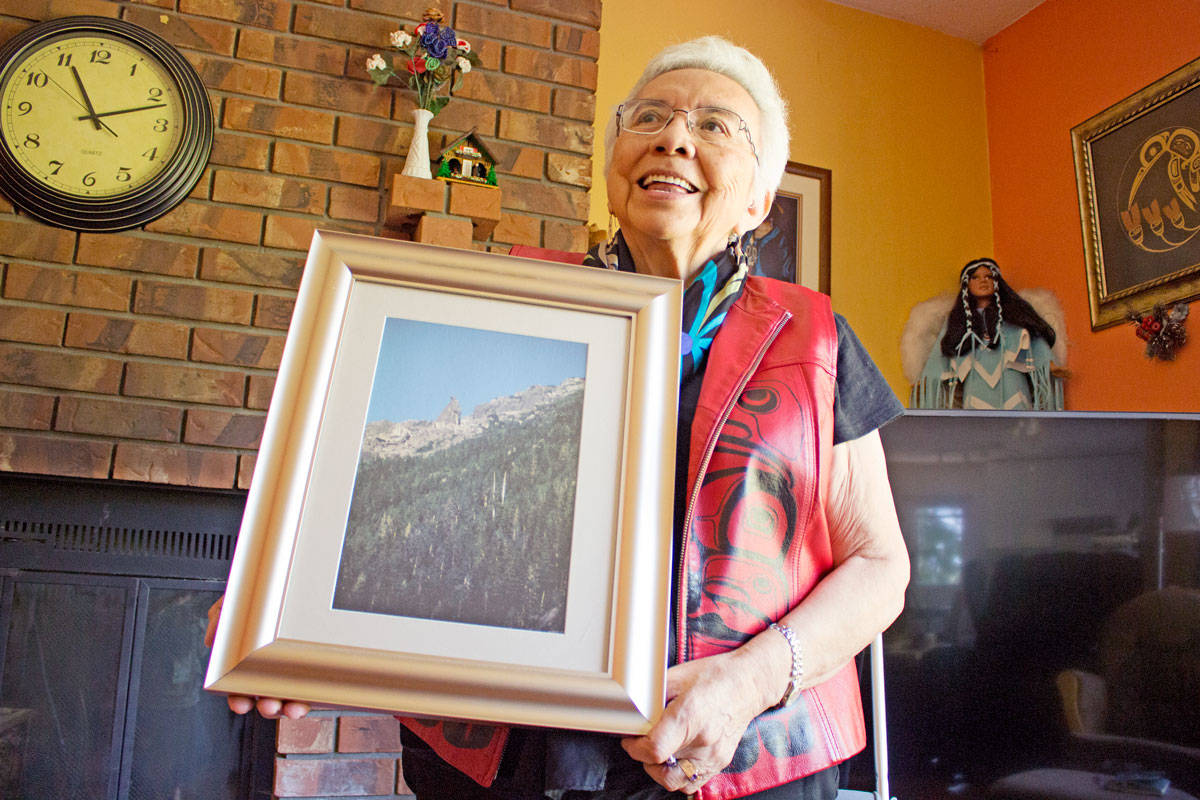As she listened to her clients during their counselling sessions, sometimes Louisa Smith’s body would react to a memory her mind couldn’t remember.
“That was an introduction to the extent of harm the residential school experience was to a wide group of First Nations. To realize that it didn’t only affect the survivors, that the second generation was affected as well,” she said of her first counselling job.
“The more I heard stories, the more I recalled my own experiences. I’m a survivor as well.”
When those memories resurfaced, Smith learned to let herself feel them.
“I ask myself, ‘How old are you, Louisa?’ This was part of my own therapy not to try to assess or try to think, but to let it come,” she said. “It feels like I’m about seven years old, and then I acknowledge that little seven-year-old, because it’s that little girl who’s feeling it.”
Smith was six years old when taken from her home in Kemano to the Alberni Indian Residential School. For the next four years, she was told her mother didn’t love her, and she couldn’t go home. It would be many more years before Smith learned none of this was true: her family had never stopped trying to bring her home.
One summer, she was finally allowed to return to Kemano, only to be taken again. This time her sister went with her, to the residential school in Alert Bay. Smith was only able to leave when she contracted tuberculosis a year later and had to be hospitalized. After an operation in Nanaimo, she was shuttled to another hospital. During her recovery, she was admitted to the hospital in Miller Bay, near Prince Rupert.
“The horrors of that experience adds to the residential school experience. In hindsight, I learned that there was a lot of experiments by doctors,” she said.
Finally, almost 10 years after she was first taken, Smith came home.
“By then, I didn’t know how to speak my language. It was ripped right out of me. I had no inkling about my culture, and I’m embarrassed to say that I was an absolute brat when I got home. In the school, you had to learn to survive so I was always in a defensive mode.
“I had no idea that my experiences had totally changed me internally. My thinking, my behaviour. Everything was just changed… I was an angry, angry person, and I acted it out,” she recalled.
The only person she wouldn’t speak back to was her grandmother. She remembers how her grandmother would “pump” love into her by wrapping an arm around Smith’s shoulders and repeatedly, but gently, squeezing. The gesture feels almost like a heartbeat, and Smith found it very comforting.
When Smith became a counsellor, she would ask her clients to think of someone who made them feel that way, and to find the same positive attributes in themselves.
“The more I learn about my own trauma, the more I’m able to help those that are just beginning to deal with our residential school nightmares. Then realizing the intergenerational effect and dealing with the second generation and giving them the history of what their parents went through,” Smith said.
READ and WATCH MORE: Heart of Our City — Murray Smith is the elder-in-residence
Even though her counselling would often unearth memories that lay dormant in Smith, she continued to help even after the work day ended. She took a leave of absence from counselling for a year to coordinate the repatriation of the G’psgolox totem pole from Sweden. As a member of the board of directors for the Nanakila Institute, she helped save Kitlope from logging, and the area was designated a provincial park.
Closer to home, Smith has been on the board of directors for the Friendship House — twice — and on the board for Restorative Justice. When she retired from those positions and from counselling, she helped train frontline workers in various villages about trauma. She spoke of her residential school experience alongside an academic presentation to contextualize the information, travelling as far as Nova Scotia to share her knowledge.
These days, she sits on two boards, for the Indian Residential School Survivor Society and the Ministry of Children and Family Development elders’ council. Now and then, a school will ask her to be an elder-in-residence or to talk to students and faculty alike about reconciliation.
“You know when the dawn breaks, it’s really dark and then eventually it begins to get lighter and lighter and lighter until the sun is shining. That’s the best way I can describe that residential school,” Smith said. “I’m now standing in the light, in learning and understanding what happened to me and learning how to release it and let it go.”
Once, Justice Murray Sinclair, who was the chairman of the Indian Residential Schools Truth and Reconciliation Commission, told Smith that reconciliation would only work if it started in the home. Which home he meant — her village, her house or her family — Smith wasn’t sure. She decided, she said as she placed a hand over her chest, home is within.
Read more Heart of Our City profiles here.
keili.bartlett@thenorthernview.com
Like us on Facebook and follow us on Twitter
